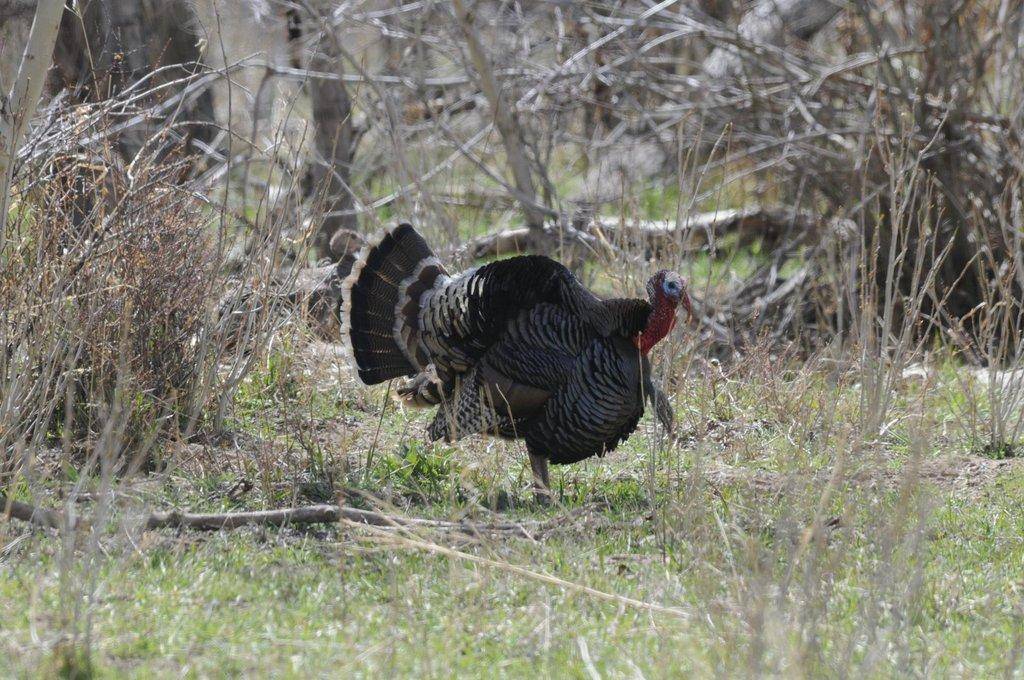DWR News Release
Thanksgiving is a time centered around all things turkey. From cute home decor to deliciously prepared main courses, turkeys are a big focal point of the holiday. If you like the idea of harvesting your own locally sourced turkey, instead of fighting the crowds to buy one at your neighborhood supermarket, you can start planning now for next year’s Thanksgiving feast — apply for an opportunity to hunt turkeys in Utah next spring.
The application period for the spring 2021 limited-entry turkey hunt opens on Dec. 1. To be included in the permit drawing, you must submit your application before 11 p.m. on Dec. 28. You can apply on the Utah Division of Wildlife Resources website or over the phone by calling the nearest DWR regional office.
The results of the drawing will be released no later than Jan. 7, 2021. You’ll be notified by email, but you can also get the drawing results online or by calling 1-800-221-0659.
The limited-entry hunt will be held April 10-29, 2021. The following permits are available for each of the DWR’s five regions:
- Northern: 400
- Central: 250
- Northeastern: 249
- Southeastern: 305
- Southern: 1,550
If you don’t draw one of the limited-entry permits, however, you can still hunt turkeys in the spring. After the limited-entry hunt is over, the general statewide turkey hunt happens in May. Permits for the general-season hunt are not limited, so you’ll have no problem getting one.
Permits for Utah’s general statewide turkey hunt go on sale at 8 a.m. on Feb. 25, 2021. The general turkey season will be held from May 3-31, and the youth turkey hunt will run from April 30 to May 2.
More information about Utah’s upcoming spring turkey hunting season is available in the 2020-21 Utah Upland Game and Turkey Guidebook. The free guidebook is available on the DWR website or you can pick up a copy at a DWR office or from hunting and fishing license agents across Utah.
History of turkeys in Utah
There are currently between 25,000-35,000 wild turkeys throughout the state, and they’re doing really well. There are two turkey subspecies that live in Utah: Rio Grande and Merriam’s. Turkeys have a long history of being in Utah, but while today’s populations are thriving, that wasn’t always the case.
“Based on historical and archeological evidence, it’s clear Native Americans and turkeys coexisted in Utah,” DWR Upland Game Coordinator Heather Talley said. “That evidence includes pictographs, petroglyphs, blankets made from turkey feathers, and turkey bones that have been found at places where Native Americans lived historically.”
However, until the 1950s, established turkey populations hadn’t been seen in Utah in 100 years or more. Except for a failed reintroduction in the 1920s, no records exist of turkeys being in Utah from the time Europeans started exploring the state to the successful reintroduction of the birds in the 1950s.
During the 1950s, biologists with the Utah Department of Fish and Game (the agency’s name was later changed to the Utah Division of Wildlife Resources in 1967) successfully released Merriam’s wild turkeys in Utah that had been obtained from Colorado and Arizona. These transplants established turkeys in Grand, Garfield, Kane, Iron and Washington counties. Turkeys from these populations have since been trapped and relocated within the state.
Beginning in 1989, the DWR began a wild turkey trapping and transplanting program within the state using mostly Rio Grande turkeys and occasionally Merriam’s turkeys from Arizona, Colorado, Kansas, Oklahoma, South Dakota, Texas and Wyoming.

